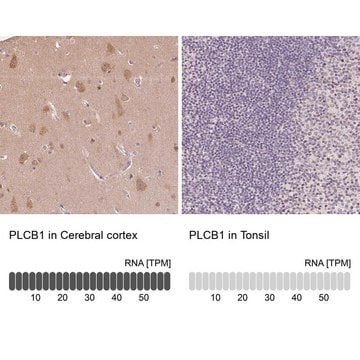P1951
Phalloidin Peptide
≥90% (HPLC), solid, TRITC labeled
Synonym(s):
Phalloidin-TRITC
Sign Into View Organizational & Contract Pricing
All Photos(2)
About This Item
Empirical Formula (Hill Notation):
C60H70N12O13S2
Molecular Weight:
1231.40
MDL number:
UNSPSC Code:
12352116
NACRES:
NA.32
Recommended Products
Product Name
Phalloidin–Tetramethylrhodamine B isothiocyanate, sequence from Amanita phalloides(synthetic: peptide sequence)
biological source
sequence from Amanita phalloides (synthetic: peptide sequence)
Quality Level
form
solid
fluorescence
λex 540-545 nm; λem 570-573 nm
storage temp.
−20°C
Related Categories
General description
Phalloidin is a phallotoxin produced by death cap mushroom Amanita phalloides. It is a cyclic peptide, which interacts with actin, and this was first identified in phalloidin-poisoned rats. It is a heptapeptide, cyclic in nature, with a crosslink between tryptophan at position 6 and cysteine at position 3. The side chain of amino acid 7 (γ-δ-dihydroxyleucine) in phalloidin, is accessible to modifications, through which florescent labelled phalloidin compounds can be produced.
Application
Fluorescent phallotoxin which may be used to identify filamentous actin.
Phalloidin-Tetramethylrhodamine B isothiocyanate has been used:-
Phalloidin-Tetramethylrhodamine B isothiocyanate has been used:-
- In Immunofluorescence for staining Filamentous actin (F-actin)
- To stain cells during immunocytochemical and cytochemical analysis
- To label actin microfilaments for fluorescence microscopy
Biochem/physiol Actions
Phalloidin interacts with polymeric actin, and not oligomeric or monomeric forms. This interaction leads to highly stabilized actin filaments, which resist depolymerization and disassembly. In rats, this toxin causes death due to liver hemorrhage, and cells show abnormal actin clustering. The affinity of phalloidin to actin is not significantly altered after derivatizing florescent labelled phalloidin compounds. These compounds can be used to study actin structure and organization within eukaryotic cells.
Toxin that binds polymeric F actin, stabilizing it and interfering with the function of actin-rich structures.
Other Notes
May contain mixed isomers
related product
Product No.
Description
Pricing
Signal Word
Danger
Hazard Statements
Precautionary Statements
Hazard Classifications
Acute Tox. 2 Dermal - Acute Tox. 2 Inhalation - Acute Tox. 2 Oral
Storage Class Code
6.1A - Combustible acute toxic Cat. 1 and 2 / very toxic hazardous materials
WGK
WGK 3
Flash Point(F)
Not applicable
Flash Point(C)
Not applicable
Personal Protective Equipment
dust mask type N95 (US), Eyeshields, Gloves
Choose from one of the most recent versions:
Already Own This Product?
Find documentation for the products that you have recently purchased in the Document Library.
Customers Also Viewed
Nadav Sorek et al.
Plant physiology, 155(2), 706-720 (2010-12-09)
Prenylation primarily by geranylgeranylation is required for membrane attachment and function of type I Rho of Plants (ROPs) and Gγ proteins, while type II ROPs are attached to the plasma membrane by S-acylation. Yet, it is not known how prenylation
Cristina Belgiovine et al.
PloS one, 5(11), e14154-e14154 (2011-01-07)
Mesenchymal and amoeboid movements are two important mechanisms adopted by cancer cells to invade the surrounding environment. Mesenchymal movement depends on extracellular matrix protease activity, amoeboid movement on the RhoA-dependent kinase ROCK. Cancer cells can switch from one mechanism to
Fluorescent phallotoxins as probes for filamentous actin.
H Faulstich et al.
Journal of muscle research and cell motility, 9(5), 370-383 (1988-10-01)
Anna Mas-Vinyals et al.
Colloids and surfaces. B, Biointerfaces, 181, 864-871 (2019-08-07)
Regenerative medicine requires the use of heterogeneous scaffolds when the tissue that needs to be repaired presents a gradient in its properties and cannot be replaced by a homogeneous graft. Then, an intimate contact between the different layers is critical
E Wulf et al.
Proceedings of the National Academy of Sciences of the United States of America, 76(9), 4498-4502 (1979-09-01)
A fluorescent derivative of phalloidin has been synthesized possessing high affinity to filamentous actin. This compound was used for visualization of actin-containing structures in eukaryotic nonmuscle cells. Due to its low molecular weight (1250), fixation for formaldehyde was sufficient to
Our team of scientists has experience in all areas of research including Life Science, Material Science, Chemical Synthesis, Chromatography, Analytical and many others.
Contact Technical Service










